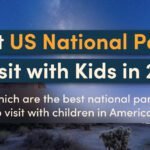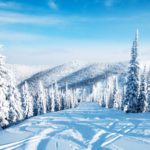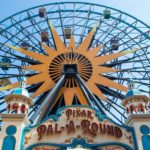Arriving at the right time is a crucial part of any vacation or day trip, no matter whether you are going on your own or as a family. Sequoia National Park is a very popular destination for a huge range of different reasons, but finding the best time to visit can really enhance the experience.
This is not just about the weather or the temperature. The time that you arrive can completely change things like the scenery on offer, the number of activities you have available, the wildlife you can enjoy, or even the size of any crowds that might build up around popular hotspots.
So, what’s the best time to take a trip to Sequoia National Park in California? Or, more specifically, what’s the best time for you?
- Visiting Sequoia National Park
- Which Month is Best?
- January at Sequoia National Park
- February at Sequoia National Park
- March at Sequoia National Park
- April at Sequoia National Park
- May at Sequoia National Park
- June at Sequoia National Park
- July at Sequoia National Park
- August at Sequoia National Park
- September at Sequoia National Park
- October at Sequoia National Park
- November at Sequoia National Park
- December at Sequoia National Park
- When is the best time to visit?

Visiting Sequoia National Park
If you are going to Sequoia National Park, then you should ideally know at least a little bit about the park itself. There are a lot of activities on offer, so it is a good idea to research the park ahead of time and pick out landmarks or locations that you will want to visit.
This can be important for choosing the perfect time to arrive since some locations might be more (or less) suited to certain weather conditions and crowd sizes. If you want to experience as much as possible, finding the ideal balance is important, especially if you have a limited time window.
If you are visiting the park as a whole, rather than aiming for a specific hotspot or attraction, then here are some things to consider in your vacation plans.
Visiting Sequoia National Park in Spring
Sequoia National Park will still be in the lingering grip of winter at the start of spring, meaning that it will still be quite cold. It also tends to be the most rain-heavy season, with the chance of snow falling in elevated areas.
More importantly, though, is the fact that spring also brings around freshly-grown plants and a lot of newborn wildlife. If you want to experience the park in its most nature-focused form, then late spring gives you a great view of the emerging plant life.
Keep in mind that spring itself is likely to gather quite a lot of visitors, especially in late spring. Early-to-mid spring conditions might mean a reduced visitor number, but late spring will usually be the point that thousands of people try to visit all at once.

Visiting Sequoia National Park in Summer
Summer will always bring a lot of crowds. The warm (and sometimes blistering hot) weather can make some of the tree-filled areas a lot more comfortable, but open ground might become more of a pain to move through if you do not bring water with you.
The number of visitors that arrive is likely to include plenty of children and possibly even schoolchildren out for field trips. Note that the campgrounds are open, which can bump up the number of visitors even further.
Summer requires some extra planning, but it is also a great time to explore more elevated areas or even get a wilderness permit to go backpacking and hiking while cutting your own trail through undeveloped areas of the park.
Visiting Sequoia National Park in Fall
Fall always comes with a temperature drop, but the park also tends to get less rain and more completely dry days. This can make it a nice time to visit if you do not want to pack for both dry and wet weather, although there can be snowfall near the end of the season in some raised areas.
Crowds tend to drop off early in September, and by November, you are back to the levels that you would expect at the beginning of spring. If you want to visit without huge crowds but still prefer having some reasonable weather conditions, then this can be a good time to plan your trip.
The exact month that you go will have a major impact on the temperature of the park itself, generally dropping from around 70 degrees to 50 degrees between the start and end of the season. Rain is also more likely as you get closer to winter, so keep that in mind.
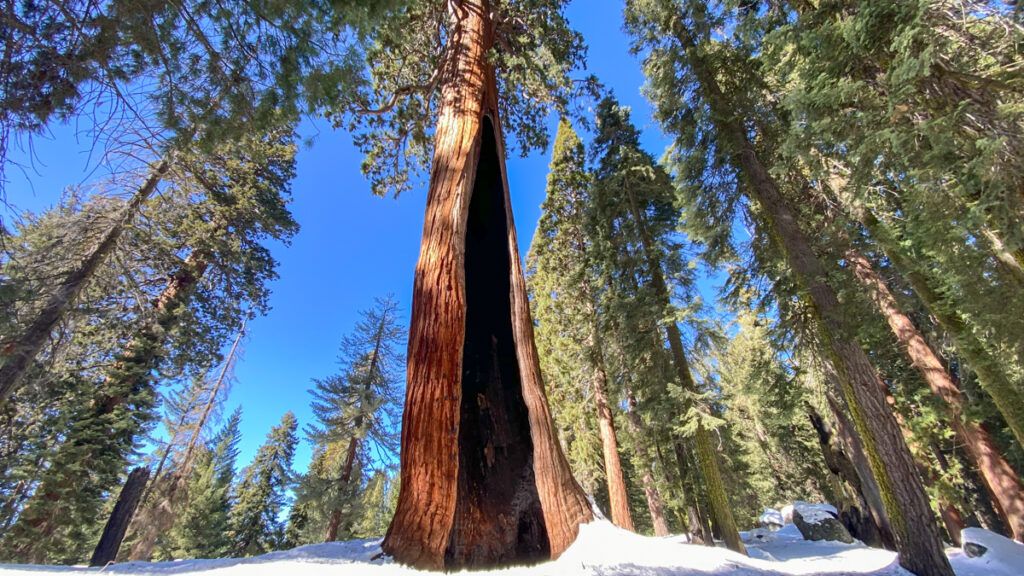
Visiting Sequoia National Park in Winter
Winter in Sequoia National Park is, unsurprisingly, cold. It is quite common for the snowfall to ramp up to the point that certain roads need to be closed or cleared on a regular basis, and you will also need to be prepared for the chance of ice, slush, or even just incredibly cold puddles.
All park lodges are open during winter, meaning that you have warm places to stay and plan your next route without needing to suffer the harsh weather the entire time. It is still important to dress appropriately for the weather and bring anything that you think you might need, though.
The higher you go, the colder the weather can get. The snow will also be much thicker in elevated areas, and it is a good idea to use your car tire chains to allow for safe driving. Crowds are at their lowest in the coldest conditions, but there will still usually be at least a thousand visitors there.
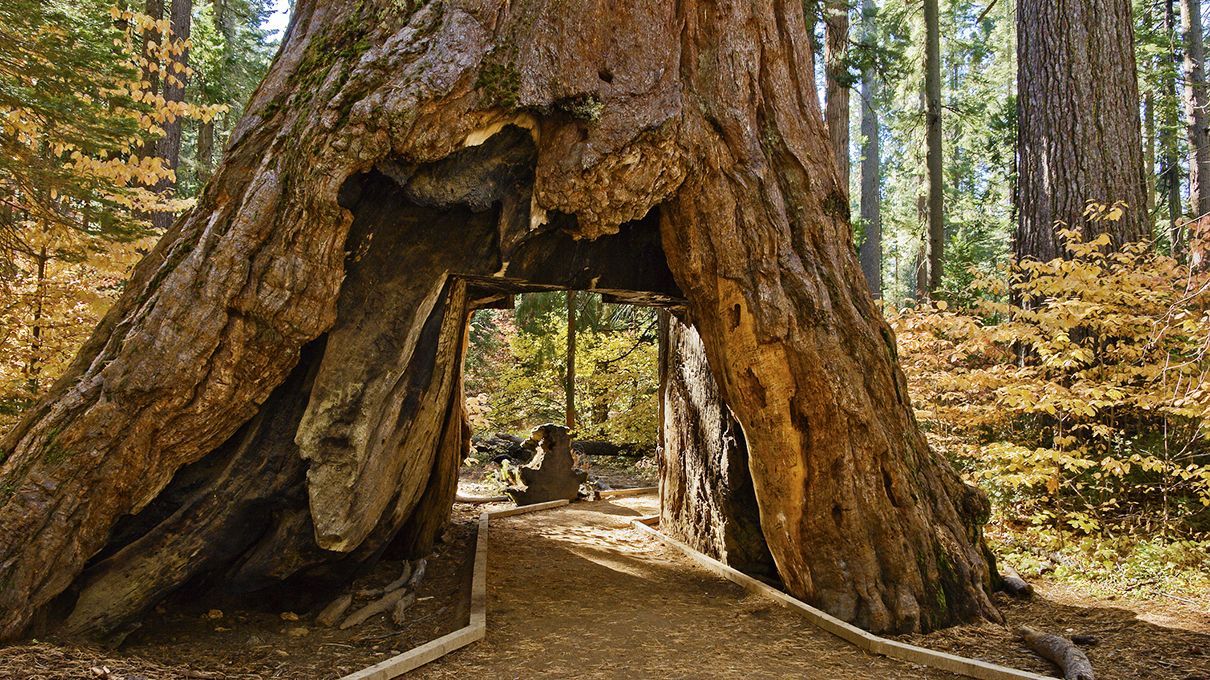
Which Month is Best?
While the differences between seasons can be quite obvious, that does not clear up the actual months that you might consider using as your visiting time. The start and end of one season can have completely different weather conditions, temperatures, and even crowd sizes.
January at Sequoia National Park
January is quite a popular visiting month for various reasons, mainly because a lot of activities are available as long as the snow is not too heavy. This includes cross-country skiing and other winter-specific activities that you can’t get at other times of the year.
Remember that January is the start of the year, meaning that many people might attend as part of late Christmas celebrations or as part of their holiday in general. Crowds tend to be slightly higher than average, but not by that much.
You will also get some fairly low temperatures, so you will still need to dress for warmth. Even if the snow melts early, rain is a definite possibility.
February at Sequoia National Park
February is similar to January in terms of temperature and can actually bring more snow than any other month of the year. The average number of visitors per day will be lower than in January, but the same risks of roads closing due to snow can also apply.
Other than that, you mostly just need to prepare in the same way that you would for the previous month. The temperature differences, on average, are so minor that you can get away with the same preparations. You can easily delay a January visit to February and not need to change your plans.
March at Sequoia National Park
March is also cold, but the average number of daily visitors will begin to spike partway through the month. Depending on how unlucky you are, the snow can get even worse here, but you can also get much better temperatures in the foothills. If you want to explore that region of the park, now is the time.
This month is a lot easier on people who want light preparations, but you will still need to consider snow and ice. It will not be completely gone straight away, and you are not likely to see the snow vanish until the end of the month at least.
Closures due to snow are still a possibility, but you are just as likely to get rain instead. Either way, this can still be a great month to visit.
April at Sequoia National Park
April will usually be the point where temperatures begin to rise, and snow levels will decrease. This tends to bring in a new spike of visitors, all of which are visiting now that the snow is clearing and the weather is getting more manageable. You should also expect rain less often than in March.
This does not completely get rid of the snow, though – there can still be snow at high elevations within the park, meaning that you will want to consider bringing a coat if you are planning on going higher. If you are sticking to the foothills, you can expect some pleasant temperatures during the day.
There will generally be less snow in places where rain and snow are falling, meaning that it is not going to be as much of an obstruction. Even so, there is always a chance of certain roads being closed, at least until the very end of the month.
May at Sequoia National Park
May is going to give you a dramatic increase in temperatures, even if snow is still a very slight threat. While late-night temperatures can still be quite cold, it is much easier to stay comfortable during this month, and snowfall drops from around 25 inches to a mere 5 at most.
This lack of snowfall (as well as a huge reduction in how much rain you will see) means that the park gains a lot of new visitors, with the average visitor number often reaching over double that of January.
As a side note, expect all roads to be opening up near the end of the month, if they weren’t already. Snow will not be as much of a problem, so most routes should be accessible both on-foot and in a vehicle.
June at Sequoia National Park
You can expect all park roads and paths to be open by June. The improved temperature conditions make it a great time to go hiking or for long walks, and the rainy days are much less common overall. Snow can still fall, but only at higher elevations. Expect even more crowds.
This makes it a perfect time to get out and explore the park, especially if you do not want to stress over bringing enough water and shade to protect yourself from extreme heat. Instead, June gives you a nice average temperature, although the foothills can get surprisingly hot during midday hours.
July at Sequoia National Park
July is easily the most popular month for people to visit the park by far, so you can expect a massive increase in how many people will be turning up. This is also often the point where fires are banned since the park is too dry to risk creating any campfires or using some fire-based cooking equipment.
The weather is excellent, but you will want to be careful in the foothills, where temperatures can almost reach 100 degrees. Bring water and make sure that you have ways to cool yourself down, especially during the middle of the day when the heat becomes even more extreme.
August at Sequoia National Park
August is also popular, boasting very similar pros and cons to July. There is also the added issue of wildfires, which have become far more common due to the increase in temperatures and dry conditions. Fire bans become even more important around this time.
Other than that, everything mentioned about July still applies. There are lots of visitors and big crowds, high temperatures in the foothills, and a relatively low amount of snow or rain. In fact, there are no days of rain in some years, making this a very dry time to visit (for better or for worse).
September at Sequoia National Park
September will see a slight drop in temperature, but the risk of wildfires is still there. The average days of rain will increase to a whopping one day, but the post-Labor Day crowds are generally much smaller than the visitor numbers you will see at the start of the month.
Keep in mind that the foothills can still get very hot sometimes, even if the rain hits. Do not visit the park unprepared if you are planning to stay out in the heat and sunlight.
October at Sequoia National Park
October is when the temperatures begin to drop, along with the average amount of visitors you will see. The colder weather can make it a nicer time to visit if you hate having to protect yourself from heatstroke or other risks, and the lower visitor count gives you more room to breathe.
The foothills can still be hot, but you are going to have more reasonable conditions than during September. Keep in mind that the rainy days are also going to start becoming more frequent, so you will sometimes have to deal with harsh downpours.
November at Sequoia National Park
November marks the start of a return to winter conditions, and that means that the temperatures late at night can reach levels below freezing. Snowfall will begin to get more and more noticeable over the month, eventually peaking at 12 inches or more in total.
This should not stop you from enjoying the park, though. You can still camp in the foothills or go for long walks in the Sequoia groves, with the only real issue being the sudden appearance of snow that was not there a month ago.
Visitor numbers also begin to drop off here, so you are not going to face as many crowds during your visit.
December at Sequoia National Park
December marks the lowest visitor count and the highest chance of snow and rain. Cold weather gets harsh quickly, and you can expect chills even during the hottest points of the day. Major roads will be closed, and you will need tire chains to access a lot of key areas safely.
You can still visit in December, and the park will look amazing with all of that snowfall, but it is not for the faint of heart. You need to prepare, stay warm, and understand that you will be facing around 30 inches of snowfall on average. Rain is also much more common during your visit.
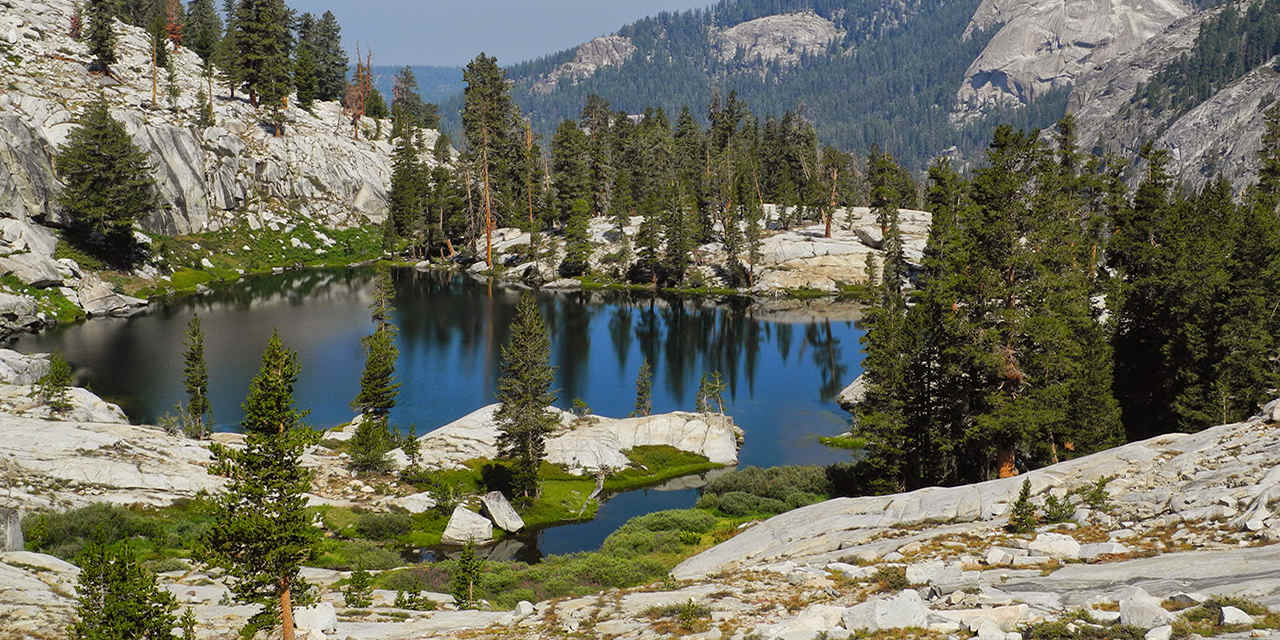
When is the best time to visit?
If you are interested in visiting Sequoia National Park, then you will generally want to go sometime between June and August. This gives you the best weather conditions and ensures that the entire park is open, even if it also means that there are going to be larger crowds than in other months.
People who are concerned about a crowded park can try going between November and April. While these are going to put you in the cold, snowy months that are not as convenient for an individual person, they also give you the chance to explore without feeling like the park is cramped.
If you are just concerned about the weather (for example, wanting to hike or camp), then you can also consider September. This month is chillier, but that is not necessarily a bad thing if you will be moving around a lot and relying on shelter anyway.
If you are taking a scenic drive or just want to go sightseeing, then any month can work, but you will usually want to avoid winter entirely. Spring and summer are ideal, and fall can sometimes be a nice compromise if you are not too worried about the cold weather creeping in.
Finally, people who are terrified of wildfires should go any time where the heat is lower. If you’re paranoid of being caught in a blaze, then look for the months where rain and snow are likely to happen and times where the park will be wetter.
More about our TFVG Author
A seasoned traveller, Dad, and avid sports tourist, James foundered The Family Vacation Guide to share his expert vacation experiences- especially when it comes to being a travelling family man.
Featured in Travel articles such as Travel + Leisure, TripSavvy and SFGate, you know you're reading some of the best vacation tips online.


